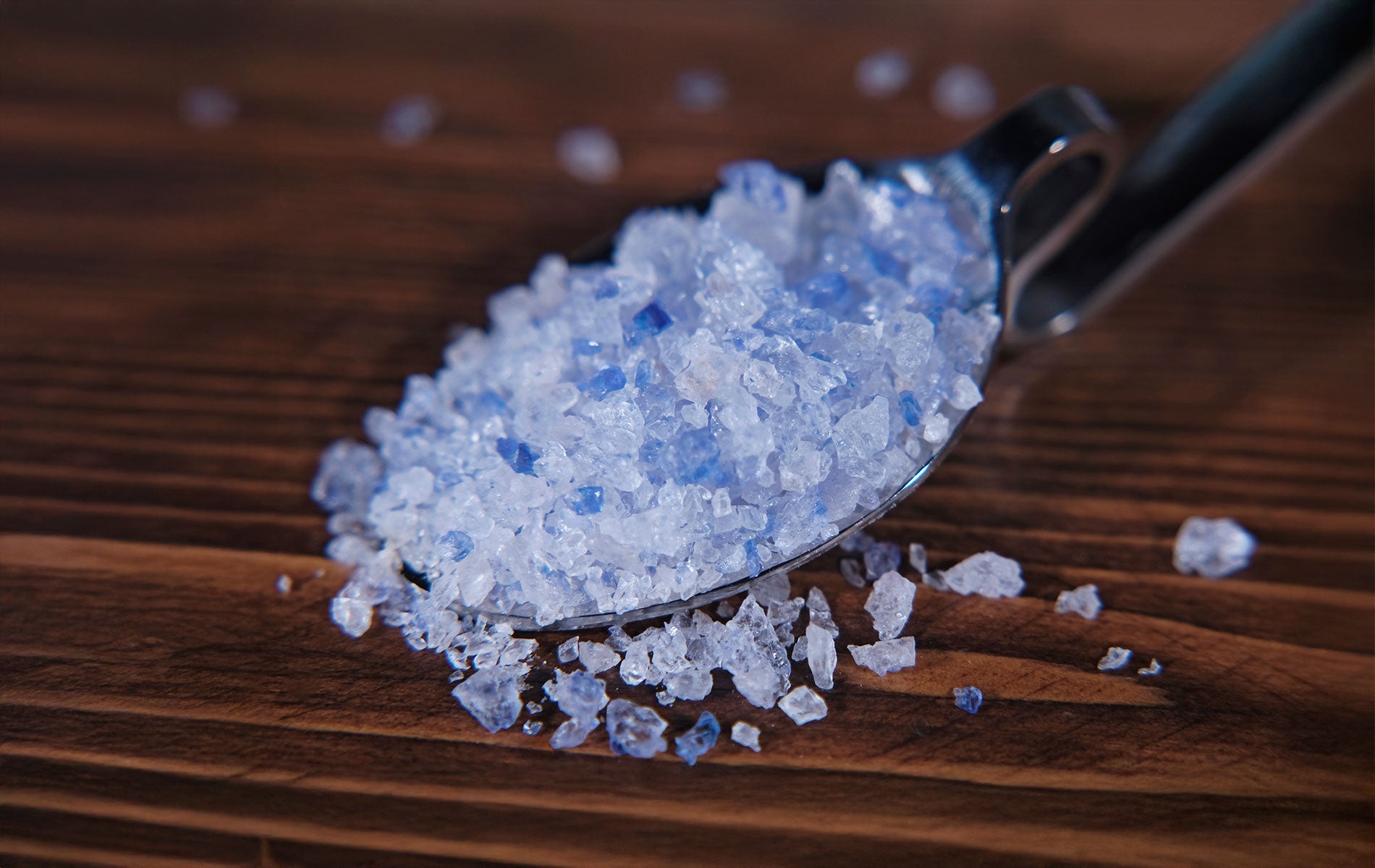Salt is a basic necessity of human life and crucial for our body's functions. However, the type of Salt that we consume also matters. Different types of Salt are available in the market, including table salt, sea salt, and pink Himalayan salt, but have you ever heard of blue Salt? This article will provide an overview of its origins and unique benefits.

Current salt alternatives and why they fall short
We have a love-hate relationship with Salt. It's a source of immense flavor, but the health impact of a high sodium diet, the risk of impurities, and processing linked to Table salt have led to a push to reduce salt intake. Due to its culinary importance, the rise of alternative salts like sea salt and pink Salt have delivered benefits when compared to table salt but also have their disadvantages.
Table Salt
Table salt is produced by evaporating salty water, resulting in Salt that contains impurities. The Salt is then processed to remove the impurities and is often fortified with iodine. The result is a fine, white powder commonly used in our food. Table salt is highly processed, stripping away rich mineral content like potassium, calcium, and magnesium. It also typically contains a high sodium content which if left unchecked can lead to potential health issues. Table Salt can also contain additives including anti-caking agents like calcium silicate or sodium ferrocyanide. While these are safe to consume in small quantities, those looking to lead a healthier diet may look to avoid them. Finally, those looking to prevent overexposure to iodine choose to avoid Table Salt as products like Fish, Dairy and other fortified products.
Pink Salt
Pink Salt is the most popular alternative to table salt and for good reason! It’s generally unprocessed, mineral-rich Salt and often boasts >30% less Sodium than traditional table salt. Popularized by Salt harvested by the Himalayan region, Pink Salt is now sourced from around the world helping to drive the prices down but starting to bring into question their sourcing and processing methods. When comparing nutritional panels, some competitive offerings have a sodium content level at parity with Table Salt!
Sea Salt
Sea Salt is derived from oceans, seas, or saline lakes. The harvesting process involves natural or artificial evaporation to extract the Salt. Due to its limited processing, it is rich in a wide array of minerals. However, some sea salt brands can contain more Sodium than table salt! Tip: Make sure to check the unit of measure between brands. Some nutritional panels are measured in 1 vs 1.5g to hide their higher numbers. Some sea salts also contain a high moisture content that clogs traditional grinders. Also, be conscious of where the sea salt is sourced from as modern sources risk microplastic contamination.
The unique benefits of Blue Salt
We at Eupherbia think Blue Salt is the best Salt on the market. It combines all the benefits of the alternative salts and the unique benefits of low Sodium and high potassium! It's a super salt!
Blue Salt is Naturally Sourced with No Microplastics
Blue Salt is a natural salt derived from ancient dried seas making it the rarest Salt in the world. These seas were formed millions of years ago before the existence of microplastics. We have the testing to prove it! The blue salt veins are formed naturally and mined by hand to maintain the ideal crystal size for grinding. Blue Salt does not undergo any chemical processing or contain any additives. Unlike table salt, This process helps maintain blue Salt's mineral-rich content.
Blue Salt is mineral-rich with low Sodium and High Potassium
Like Sea Salt and Pink Salt, Blue Salt is mineral rich containing nearly 60 minerals including calcium and magnesium. However, Blue Salt's brilliant blue color comes from abundant minerals, including potassium. 1 tsp of Blue Salt contains 200 mg or 6% of your Daily Value of Potassium which supports heart health and muscle function. Blue Salt also contains some of the lowest sodium content on the market 30% less than the leading Pink Himalayan competition and 50% lower than the leading Sea Salt competitor!

How to use Blue Salt?
Blue Salt can be used just like any other salt. Its crystalized form makes it ideal for grinding into recipes for flavoring your favorite cut of meat as a tableside garnish, or favorite smoothie. Some have even integrated it into their wellness routine!
Final Thoughts
Blue Salt is more than just a fad. This rare culinary delight provides a unique flavor for unique culinary experiences. Its unprocessed, naturally harvested processing maintains its high mineral rich content providing consumers with low Sodium and infuses any recipe with potassium.
Head to Eupherbia.com to try our amazing Blue Salt in a 100-gr grinder or 227-gr pouch!



Share:
The Versatility of Saffron: A Global Ingredient for Every Dish